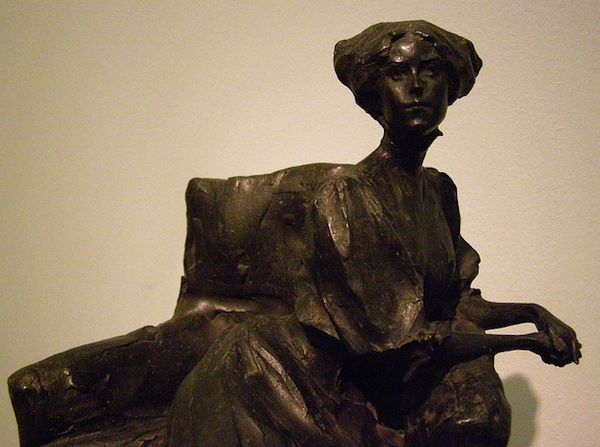Born and raised in Italy, Prince Paul Troubetzkoy was a master of sculpture and known as one of the more famous society portraitists of his time. The second child of Pyotr Petrovich Troubetzkoy of Russia, Paul’s international escapades led him to meet an array of elites across Russia, America, and Europe. This combination of raw brilliance and outside influence made for a storied career.
A Vibrant Art Scene
Troubetzkoy came into this world in 1866, just as the Impressionists were really beginning to hit their stride. At his family’s home on Lake Maggiore, known as Villa Ada, popular artists and poets would visit the opulent residence to exchange ideas and share their talents. Composer Alfredo Catalani, painter Tranquillo Cremona, and sculptor Giuseppe Grandi would all cross paths with the Prince.
He spent years developing his style in Milan, where the movement was thriving. He would adopt the Verism trend as his own, shunning the Neoclassical tradition in favour of contemporary subjects. In 1884, he was an apprentice in the fashionable city alongside Donato Barcaglia and Ernesto Bazzaro.
Striking Out on His Own
Like many artists, Troubetzkoy didn’t have a lot of patience — particularly when it came to disciplined study. His apprenticeship only lasted a few months before he was ready to work on his own. In 1886, he exhibited his first sculpture of a horse at the Brera Academy. His fledgling works were small statues of animals, such as dogs and elephants.
By 1890, he was entering a variety of public monument competitions. His entries depicted the likes of Amedeo VI of Savoia, Dante, and Garibaldi. His works were acquired by Italian museums as well as the Golden Gate Museum in San Francisco.
The Turning Point
From the late 1800s to early 1900s, Troubetzkoy largely lived in Russia. He went through a transformation after meeting Leo Tolstoy in 1899. His bond with the humanitarian author would lead the Prince to cease eating meat, change his circle of friends, and challenge many of his long-standing beliefs. You can see these changes reflected in his work.
In 1900, his entry at the Exposition Universelle in France was titled Leo Tolstoy riding “Delire”. Capturing the image of the rider on his famous mare was the talk of the town in Paris and the recognition made him more in-demand amongst the upper crust of society than ever before.
From there, he won bids for major monuments in Russia and began touring exhibitions across Europe. After meeting so many notable politicians and noblemen, Troubetzkoy would begin to pivot his work more toward portraits of the aristocrats of his time.
Working with the Upper Classes
After moving to Paris after the Russian-Japanese war broke out, Troubetzkoy would create some of his finest portrait statuettes. He was welcomed by the Vanderbilts, who would introduce him to some of the wealthiest Americans at the time. From his friend George Bernard Shaw to General Harrison, he depicted a number of personalities during his years in France.
He would also travel extensively in the US. In Washington D.C., Cleveland, Boston, and Chicago, Troubetzkoy displayed his work and met any number of celebrities while on tour. In Hollywood, he would befriend some of the most talented actors, directors, and producers of famous burgeoning studios.
By 1921, Troubetzkoy opened the studio Neuilly-sur-Seine where his subjects could sit for his portraits. Ten years later, he would participate in his last exhibit in London before moving to Italy in 1932. He ended his career by displaying his works across his birth country before his death in 1938.

